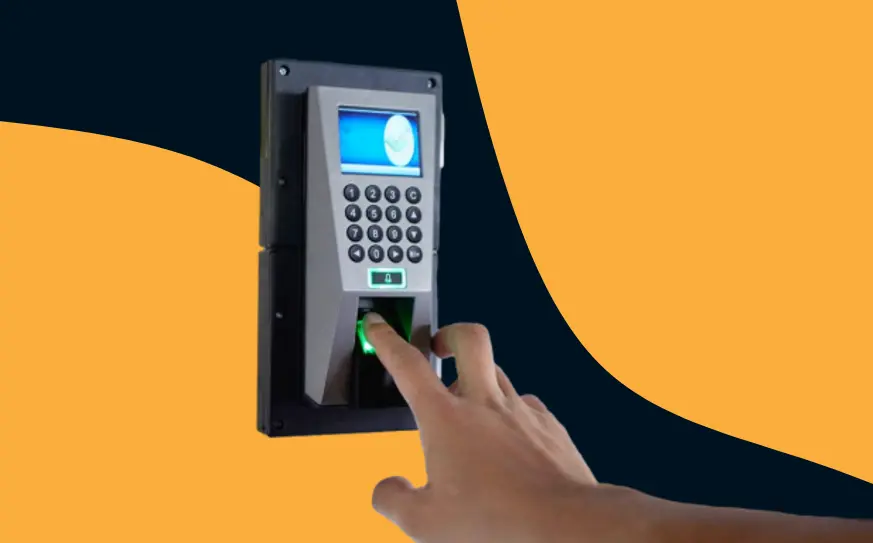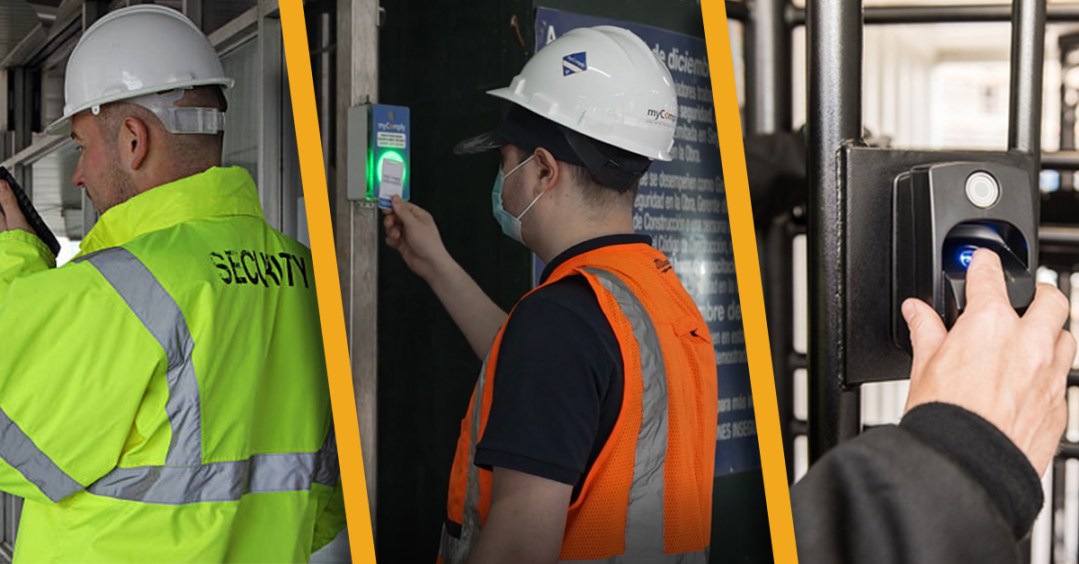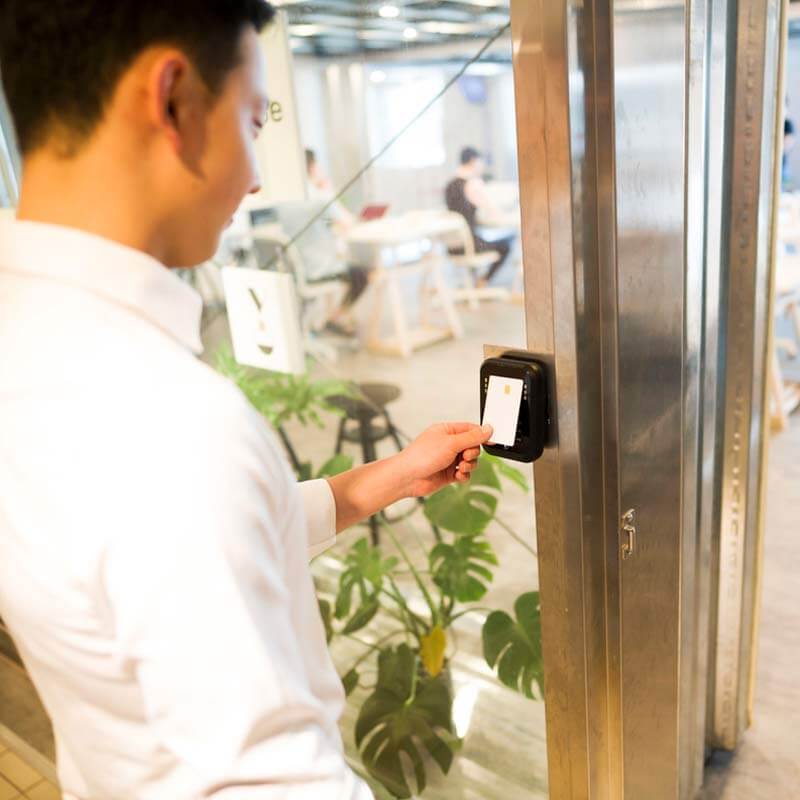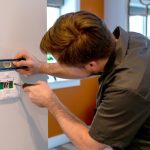In an era where security and safety are of paramount concern, the implementation of effective physical access control systems has become a crucial element in safeguarding both commercial and residential properties. These sophisticated systems go beyond mere locks and keys, providing a comprehensive and customizable solution that grants or denies access to authorized individuals, while meticulously monitoring and recording the flow of traffic within your premises.
In this comprehensive guide, we will delve into the world of physical access control, exploring the various components, functionalities, and best practices that can help you fortify your spaces and ensure the protection of your valuable assets. From understanding the fundamental elements of a physical access control system to the process of selecting and implementing the right solution for your specific needs, this article will equip you with the knowledge and confidence to take control of your security landscape.
Prepare to unlock the power of physical access control and fortify your spaces with a robust and tailored security solution.

Understanding the Fundamentals of Physical Access Control
Before embarking on the journey of implementing a physical access control system, it’s essential to have a solid grasp of the underlying principles and components that make up this comprehensive security solution.
The Pillars of Physical Access Control
Physical access control systems are built upon three core pillars: identification, authentication, and authorization.
Identification
This component involves the process of recognizing and distinguishing authorized individuals from unauthorized ones.
Authentication
The authentication process verifies the claimed identity of the individual, ensuring that they are who they claim to be.
Authorization
Authorization determines the specific access privileges and permissions granted to each authorized individual.
Key Components of a Physical Access Control System
Effective physical access control systems typically consist of several integrated components, each playing a crucial role in the overall security framework.
Access Readers and Sensors
These devices, strategically placed at entry points, are responsible for identifying and verifying authorized individuals.
Control Panels and Interfaces
The control panel serves as the brain of the system, managing the flow of information and decision-making processes.
Locks and Access Points
The physical locks and access points are the final line of defense, restricting entry to authorized individuals only.
Technological Advancements in Physical Access Control
The field of physical access control has witnessed significant technological advancements, offering a range of innovative solutions to enhance security and user experience.
Biometric Identification
Biometric technologies, such as fingerprint scanners or facial recognition, provide a highly secure and convenient method of identification.
Mobile and Cloud-Based Solutions
Emerging cloud-based and mobile-enabled access control systems offer increased flexibility, scalability, and remote management capabilities.
Assessing Your Physical Access Control Needs
Before selecting and implementing a physical access control system, it’s essential to thoroughly assess your specific security requirements and operational needs.
Evaluating Your Facility and Access Points
The first step in the assessment process involves a comprehensive analysis of your facility’s layout and the access points that require control.
Mapping Entry and Exit Points
Identify and document all the entry and exit points within your facility, regardless of their current security measures.
Categorizing Access Zones
Divide your facility into distinct access zones, based on the level of security and access control required in each area.
Determining User Groups and Access Privileges
Understanding the different user groups and their respective access requirements is crucial for configuring an effective physical access control system.
Identifying User Roles and Responsibilities
Clearly define the various user roles, such as employees, visitors, or contractors, and their corresponding access needs.
Establishing Access Privileges
Develop a detailed access control matrix that outlines the specific permissions and restrictions for each user group.
Considering Scalability and Expansion Requirements
As your organization grows or your security needs evolve, it’s essential to select a physical access control system that can adapt and scale accordingly.
Anticipating Future Expansion
Evaluate your current and anticipated growth plans to ensure the chosen system can accommodate future expansion and changes.
Ensuring Compatibility with Existing Infrastructure
Assess the compatibility of the physical access control system with your facility’s existing security, IT, and building management infrastructure.
Selecting the Appropriate Physical Access Control Solution
With a comprehensive understanding of your security requirements and operational needs, you can now proceed to the selection of the most suitable physical access control solution.
Evaluating System Features and Capabilities
Carefully examine the features and functionalities offered by various physical access control systems to ensure they align with your specific requirements.
Identification and Authentication Methods
Assess the available identification and authentication options, such as card readers, biometrics, or mobile credentials.
Monitoring and Reporting Capabilities
Prioritize systems with robust monitoring and reporting features to track and analyze user activity and access events.
Considering System Scalability and Flexibility
The selected physical access control solution should possess the flexibility to adapt to your evolving security needs and operational changes.
Scalability and Expandability
Ensure the system can seamlessly scale up or down to accommodate changes in the number of access points or user population.
Integration with Other Security Systems
Evaluate the system’s ability to integrate with other security technologies, such as video surveillance or intrusion detection, for a comprehensive security approach.
Evaluating Installation and Maintenance Requirements
The ease of installation and ongoing maintenance should be factored into the decision-making process to ensure a smooth and efficient implementation.
Ease of Installation and Configuration
Assess the complexity of the installation process and the availability of professional installation services.
Maintenance and Technical Support
Consider the system’s maintenance requirements and the level of technical support provided by the manufacturer or vendor.
Implementing and Maintaining the Physical Access Control System
Once you have selected the appropriate access control solution, the next step is to ensure a seamless implementation and ongoing maintenance of the system.
Site Evaluation and System Design
The implementation process begins with a thorough evaluation of the installation site and the design of the access control system.
Mapping Access Points and Zones
Collaborate with the installation team to accurately map out the access points and designated access zones within your facility.
Optimizing Component Placement
Determine the optimal placement of access readers, control panels, and other system components to ensure efficient and effective coverage.
Installation and Integration
The physical installation of the access control system components and their integration with your existing infrastructure is a critical phase.
Mounting Access Readers and Sensors
Securely install the access readers and sensors at the designated entry and exit points.
Connecting to Power and Network
Establish the necessary power and network connections to ensure the seamless operation of the access control system.
System Configuration and Programming
After the physical installation, the access control system must be properly configured and programmed to align with your specific security requirements.
Defining User Profiles and Access Privileges
Establish user profiles and access privileges based on the previously defined user roles and responsibilities.
Configuring Monitoring and Reporting
Set up the system’s monitoring and reporting capabilities to track user activity and generate necessary security logs.
Testing, Commissioning, and Training
Prior to the full-scale deployment of the access control system, it’s essential to thoroughly test the system, commission it for operation, and provide comprehensive training to end-users.
Comprehensive System Testing
Conduct rigorous testing to ensure the access control system is functioning as intended and identify any potential issues.
User Training and Education
Provide comprehensive training to educate users on the proper procedures for accessing the system and reporting any concerns.
Ongoing Maintenance and System Updates
Maintaining the physical access control system and keeping it up-to-date with the latest security enhancements is crucial for ensuring its long-term effectiveness.
Scheduled Maintenance and Inspections
Implement a regular maintenance schedule to ensure the system components are functioning optimally and address any wear and tear.
Firmware and Software Updates
Stay vigilant in applying the latest firmware and software updates to the physical access control system, addressing any security vulnerabilities or enhancing its functionality.
Conclusion: Fortifying Your Spaces with Physical Access Control
The implementation of an effective access control system is a critical step in fortifying your spaces and safeguarding your valuable assets. Through this comprehensive guide, you have gained a deep understanding of the fundamentals of access control, the process of assessing your security needs, and the strategies for selecting and implementing the most suitable solution.
By meticulously mapping your access points, defining user roles and access privileges, and selecting a access control system that aligns with your specific requirements, you are now equipped to take control of the security landscape within your facility. The detailed implementation and maintenance strategies outlined in this article will ensure the seamless integration of your access control system and its long-term effectiveness in protecting your spaces.
As you continue to navigate the evolving landscape of access control, remember to remain vigilant, adaptable, and open to the latest technological advancements. Stay informed about industry trends, seek professional guidance when necessary, and regularly evaluate the performance of your access control system to maintain a robust and resilient security infrastructure. By doing so, you’ll unlock the full potential of access control and enjoy the peace of mind that comes with a fortified and well-protected environment.
Fortify your spaces and safeguard your valuable assets with the power of access control.


